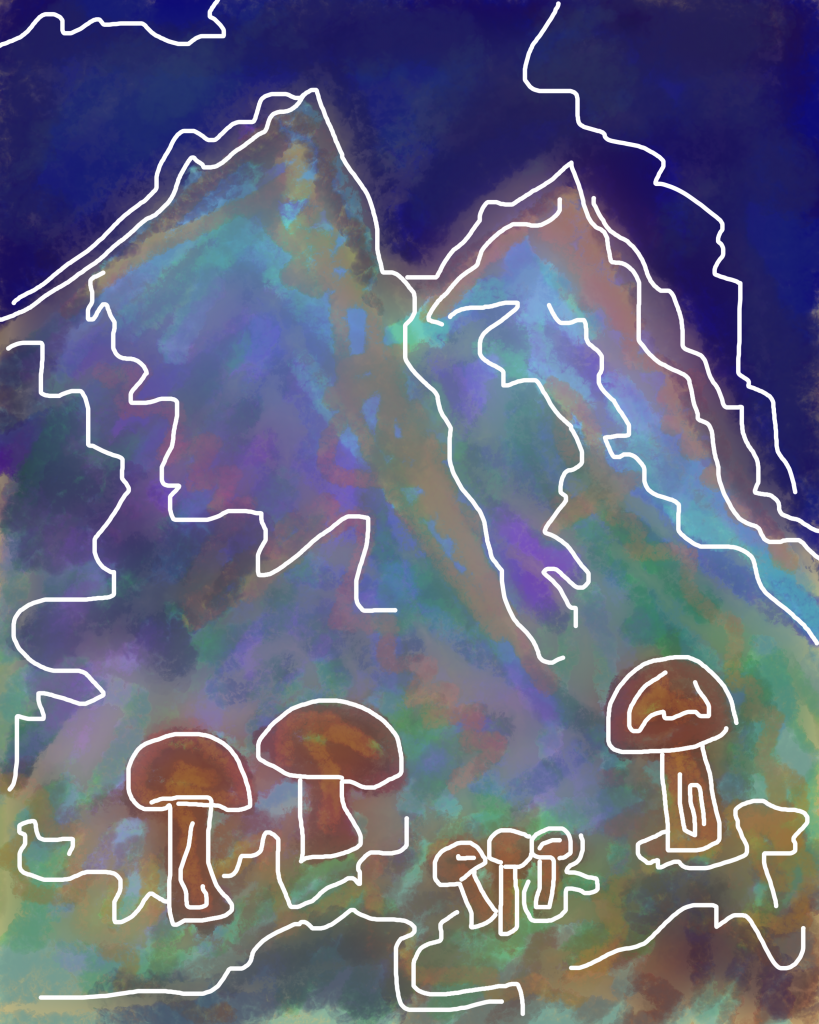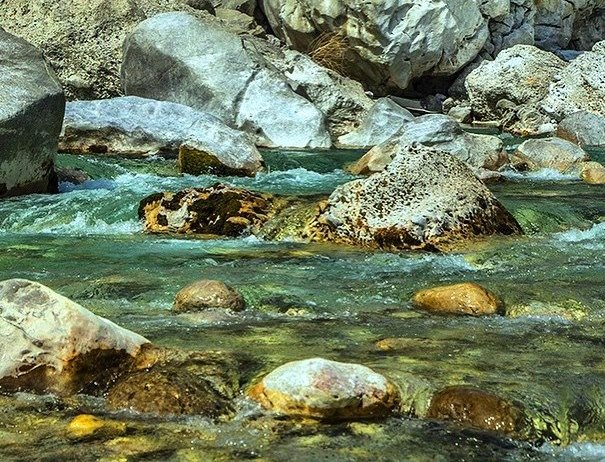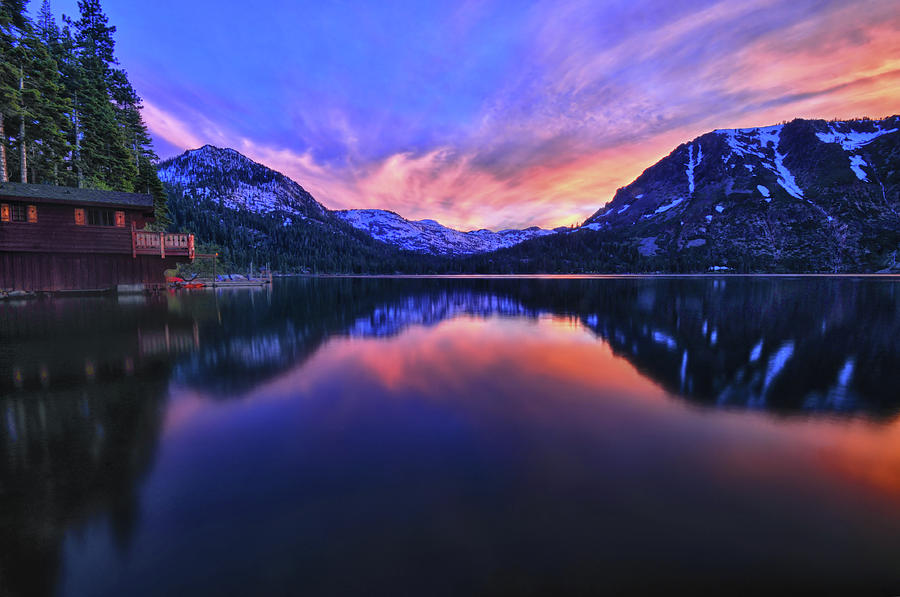The prompt was “mushroom,” singular, but I drew multiple.

This is the first Drawlloween picture that I’ve totally freehanded. I’m happy with the color palette!
writer + curious person
This website was archived on July 21, 2019. It is frozen in time on that date.
Sonya Mann's active website is Sonya, Supposedly.
The prompt was “mushroom,” singular, but I drew multiple.

This is the first Drawlloween picture that I’ve totally freehanded. I’m happy with the color palette!
Content warning for pet death and light descriptions of gore.
Death is on my mind. Not in a morbid way. I’m thinking about death because it happens all the time. Everything I can say about this sounds trite; we’ve been grappling with it for millennia. Even just that sentence sounds like a rehash of previous rehashings.
“In the sweat of thy face shalt thou eat bread, till thou return unto the ground; for out of it wast thou taken: for dust thou art, and unto dust shalt thou return.” — Genesis 3:19, King James Version
Three of my rabbits have died during the past few months. To be more accurate: two of my rabbits died and one was killed.
The first two deaths were sad, but they were okay. One bunny died while digging a hole in the garden, and one died while taking a nap, as far as we can tell. Both seemed peaceful, and rabbity — good ways to go. We can’t be sure without necropsies (animal autopsies), but our theory is that their deaths were due to old age. We didn’t know the precise age of either rabbit, since they were both adopted from Craigslist, from previous owners who also weren’t sure of the animals’ ages, but they weren’t visibly sick or behaving strangely. “Natural causes” is the best guess.
Of course, “natural causes” is a misnomer. We use that term to talk about expected deaths, ones caused by internal malfunctioning. But murder — to use a melodramatic term for predation — is natural.
The third rabbit, our favorite rabbit, the one we’ve had the longest, was killed. We think it was an owl. My mom heard the scream in the night — she went outside to see what was happening, saw that all the animals’ enclosures were shut, and went back to bed thinking that our pets were okay. As it turned out, Doof had pushed open the door to his enclosure, which bounced back behind him, and was freely enjoying the night, I presume. Until he was attacked.
My body feels confident when I climb river rocks. I inhabit my limbs the way I want to. Weight shifts with each step and I can predict where it will fall, where the momentum will push me. Light sweat on my shoulders as I crouch to watch the bubble shadows cast by river skeeters’ feet. The insects dart across the surface and their expanded silhouettes glide along the grey-green algae at the bottom of two feet of clear water. Each round, dark shadow is ringed by a thin yellow halo of sunshine.
When I was about ten my dad taught me how to climb river rocks along the Tuolumne River. We scrambled over boulders, watching the water. He told me, “Three limbs on the rock, always.” This principle is called “three-point contact”. His lessons stuck in my head: Test your handholds. Don’t commit your weight before you’re sure that the rock is solid. Dad also counselled, “Never turn your back on the ocean,” but that was another time.

Nature doesn’t care. We personify this amalgamation of thermodynamic forces and biological phenomena, but actually what we call “nature” is too vast and complex to have predictable moods. Sure, the patterns are measurable, but a day-hiker can’t guess when the old tree across the stream will crack — not without particularly astute intuition. Nature has power beyond your imagining, and you have to maintain the kind of respect entails a lot of fear.
Even when I feel most in control of my physical self, scaling dusty boulders on the way to a waterfall, I’m scared because I know how much it would hurt to fall. I remove my shoes right away; I need to feel where I’m stepping and grip with my toes. I pay close attention. Avoid the wet rocks, slick with algae slime. Otherwise I could break my neck — or my collarbone, or my ankle. Any of those would be excruciating.
Of course, the risk must be what makes the river exciting. Would I be able to relish the feeling of bodily mastery if I wasn’t also contemplating the loss of it? It’s impossible to see without contrasts. You can’t distinguish anything.

River hikes are on my mind because I’m vacationing with my family on the edge of Fallen Leaf Lake, near Lake Tahoe. The area is beautiful — much more lovely than the photo above, despite the hyper-saturated sunset. You can’t imagine how many trees are here (unless you live in a similarly forest-adjacent area). The air smells piney — it makes me want to quit the city. I suppose that’s how you always feel until you get back home to reliable internet and urban debauchery.
Originally this was the intro to a Bustle post about the symbolism of spring fashion, but I decided the intellectualism was too much for that venue.
In the days of yore, back when fire was a relatively recent tool in the human arsenal, back when the night sky was populated by constellated gods, humans constructed mythological systems to make our lives more meaningful. To give ourselves psychological safety. We didn’t understand nature and without advanced technology, our environment was terrifying. The world was vast, sometimes unpredictable, harsh — and yes, lovely.

During prehistory, up through the Middle Ages (depending on your continent), “science” didn’t exist in the way that we conceive of it now, as an ordered, logical process. People saw things and extrapolated from their observations, but magic was as valid an explanation for an unknown phenomenon as physics, if not more so. In some places, witchcraft is still a popular framing of power and knowledge, as demonstrated by Mischa Berlinski’s astonishing “Zombie Underworld” story.
Before math and chemistry, mythology saved us from the pain of uncertainty. We built systems of origin stories, hero stories, and human stories, to give our lives an explanatory context. Many of these stories mimicked the patterns of the natural world. The boom of a storm made sense because Thor, the Norse god of thunder, was hurling his warhammer. Every year the flowers bloomed again when Persephone emerged from Hades’ underworld kingdom. In ancient Egypt, the Nile flooded at the water god Hapi’s discretion.

Now we have a tradition of science, which purports to illuminate weather, diseases, and animal behavior without ritualistic romance. And yet we hold onto mythology. Urban legends flourish, as do mysterious horror stories, both exemplified by Reddit’s “No Sleep” community. There is something essentially human about magic. We refuse to give it up. Our reactions to fear and love feel like they supersede science, and we need another force to express them; gravity won’t suffice. We are drawn to allegory, to symbols. As esteemed scholar Joseph Campbell writes in The Masks of Gods: Primitive Mythology:
“The comparative study of the mythologies of the world compels us to view the cultural history of mankind as a unit; for we find that such themes as the firetheft, deluge, land of the dead, virgin birth, and resurrected hero have a worldwide distribution—appearing everywhere in new combinations while remaining, like the elements of a kaleidoscope, only a few and always the same.”
Basically, mythology has existed as long as human language, and it’s still around. Cyclical stories are an essential part of human culture. However, most modern people don’t consciously incorporate mythology into their lives. Maybe we should.

Sign up for my newsletter to stay abreast of my new writing and projects.
I am a member of the Amazon Associates program. If you click on an Amazon link from this site and subsequently buy something, I may receive a small commission (at no cost to you).